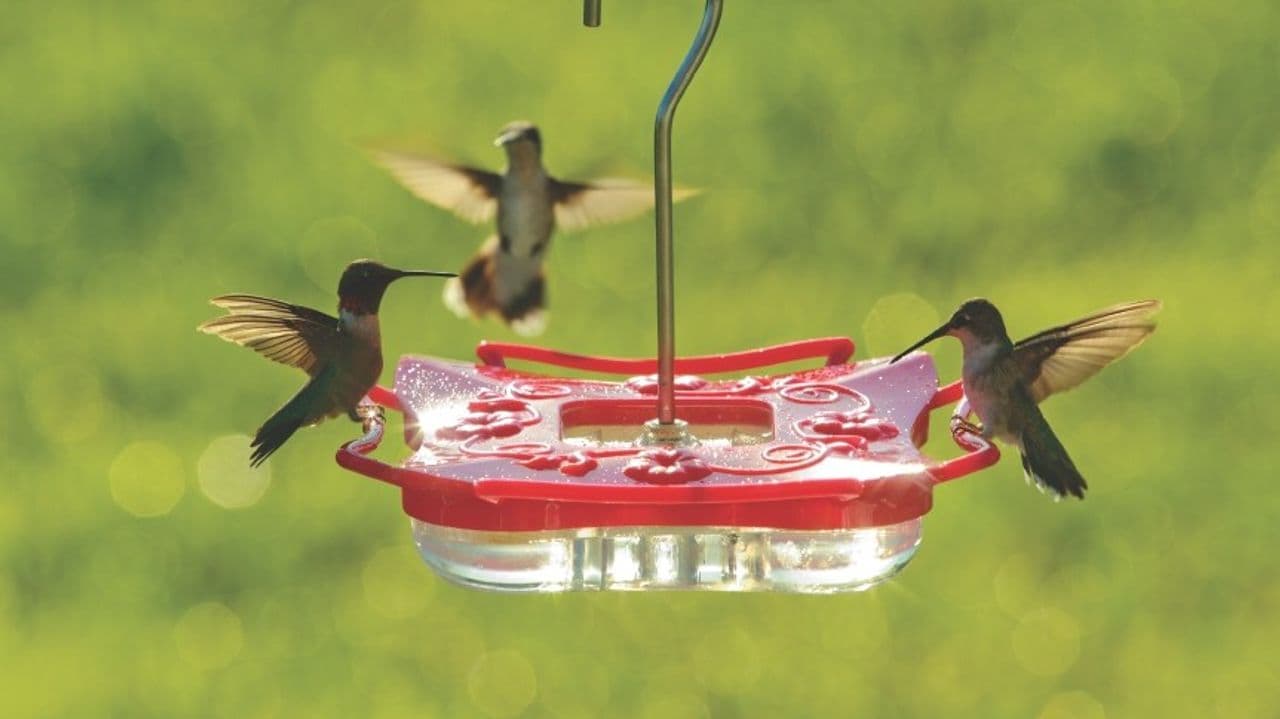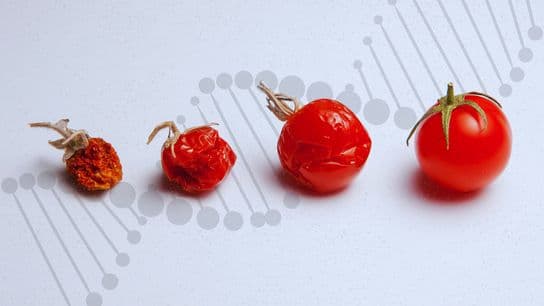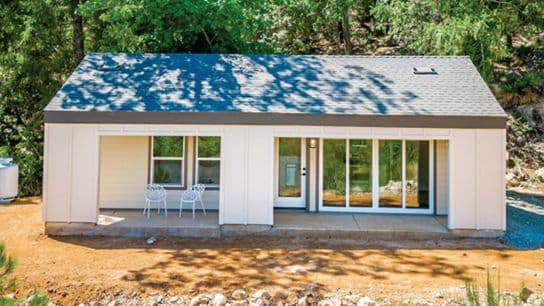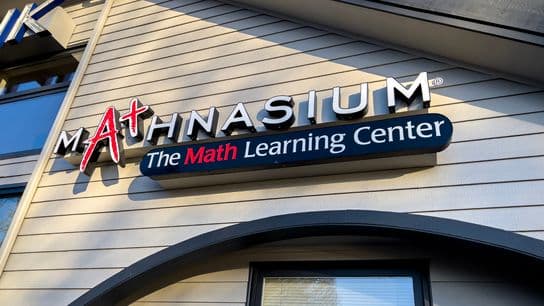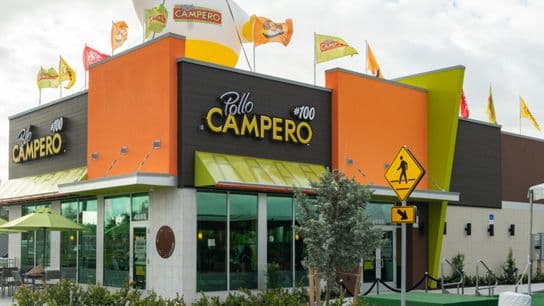10 Tips for Attracting Hummingbirds During Spring Migration
As the colorful birds return to North America from the south, Wild Birds Unlimited stores are helping customers attract them
Each spring, North America sees the homecoming of hundreds of species of birds returning from their winter homes in warmer climates. Among them are a variety of hummingbirds indigenous to the U.S. Because the colorful birds, though small, are easy to attract and spot in residential neighborhoods, their return is a particularly welcome one for bird watchers.
To celebrate and prepare for the hummingbirds’ spring migration, Wild Birds Unlimited* owners across the United States and Canada are stocking up on hummingbird feeders, nectar and other products and inviting customers to come learn how best to attract hummingbirds to their yards.
Barbara Haralson and David Menough have both run Wild Birds Unlimited stores for more than 20 years. Haralson’s store is in Greensboro, North Carolina, and Menough’s, which he owns with his wife Kathy, is in Arvada, Colorado. We asked Haralson and Menough to share their best tips for attracting and spotting hummingbirds during spring migration. Here’s what they had to say.
1. Timing
First things first. It’s important to know when hummingbirds will be arriving in your town. In Greensboro, hummingbirds appear around the first of April, but they don’t reach Colorado until the middle of the month (“Hummingbird Day is a nicer way of looking at April 15th than Tax Day,” Menough notes).
Menough: “Having feeders set up just before the hummers show up will increase the odds that they’re found. These marvelous little birds are looking for a reliable source of energy, so you want to be ready when they arrive.”
Haralson: “Hummingbirds will also begin feeding more heavily later in the summer. Nearly every time a customer tells us that they haven’t attracted any hummingbirds, we find they gave up stocking their feeders before the end of June, which is when hummingbirds begin eating heavily at feeders.”
2. Visibility
Hummingbirds have no shortage of nectar sources in the spring, so they won’t put too much work into scanning your yard for a feeder. To attract them, make sure your feeder is bright and easily visible to any passing hummingbird.
Menough: “Feeders need to be right out in the open where hummingbirds can see them. They are flying at 50–60 feet in the air. If all they see when they look down is trees and rooftops, they aren’t going to stop.”
Haralson: “Attracting hummingbirds is very easy. It often takes little more than putting out a feeder and keeping the nectar fresh. The important part is that the hummingbirds can find the feeder. I once had a customer who attracted hummingbirds to a feeder on the third-floor balcony of a condominium. If they can find it, they’ll come.”
3. Consistency
Consistency is key to making your yard a regular visiting spot for hummingbirds. Hummingbirds have long memories, and if they can come to rely on your yard as a source for food, they’ll return time and again.
Menough: “Like most feeder birds, hummingbirds like consistency. Having a feeder that is ready for them whenever they want it is essential to building a great hummingbird habitat that will improve year after year. Hummingbirds have great memory skills and can live for more than a decade. They will return to a good feeding spot for years.”
4. Flowers
Hummingbirds are hardwired to search for certain types of flowers. Use that instinct to your advantage by planting specific flower species in your yard to attract hummingbirds.
Haralson: “It helps to place the feeder near flowers that are attractive to hummingbirds, which typically means anything with a trumpet or tubular-shaped body. Although hummingbirds are often associated with the color red, they feed from other colored blooms as well. I have a purple perennial salvia called May Nights in my yard, and that’s become a hummingbird favorite.”
Menough: “Two big natural sources in our area are trumpet vine and mimosa trees, neither of which I would recommend someone plant in their yard because they are very aggressive. But there are a number of native plants that are attractive to hummingbirds and more amenable to yards and home gardens. Flowers like salvia, agastache, columbine, honeysuckle and penstemon, just to name a few, can really make your yard the place for hummingbirds.”
5. Nectar
Make sure your feeder is stocked with fresh nectar all day to make your yard a reliable food source for hummingbirds.
Haralson: “Hummingbirds feed from sunup to sundown, and you want to make sure that nectar is always available. Nectar is easy to make. Just mix four parts water to one part sugar. Because nectar goes bad outdoors, I recommend filling feeders only a small amount at a time. Any excess nectar can be stored in the refrigerator.”
Menough: “Keeping the nectar fresh is crucial. Change the solution every three days when temperatures are above 80 degrees and every five days when temperatures are below 80. Some people add red dye to the solution, but we advise against that. It is unnecessary and may be harmful to the birds.”
6. Insects
Hummingbirds don’t just feed on nectar, they also enjoy any number of small insects. By attracting some of the less bothersome insects to your yard, you can provide an impromptu feast for your hummingbirds.
Haralson: “I like to use fruit to attract small insects to feed hummingbirds. I put out my watermelon rinds in an area of my yard and let them attract fruit flies, which the hummingbirds enjoy.”
7. Nests
Hummingbirds are known to get creative with their nests, using a variety of natural materials to fashion roosts for their eggs. Hummingbird nests are tiny, lovely and notoriously difficult to spot.
Haralson: “We’re often asked how to find hummingbird nests. It’s not easy. The nests are about the size of a golf ball, and the eggs the size of a frozen pea. They are also well camouflaged, often made of plant fibers and spider webbing, the latter of which helps the nest expand as the nestlings grow. The outside of the nest is often covered in plant lichen, so it blends in on a small fork in a tree or in a shrub. If you can’t spot one yourself, there are some fun pictures on the internet of nests built in peculiar places like on top of wind chimes or on the s-shaped curve of an iron railing.”
8. Abundance
Hummingbirds are among the smallest birds in North America but they eat a lot. Hummingbirds expend far more energy than most other birds, and they require a near constant source of fuel.
Menough: “Hummingbirds are extremely active through the day and seem to feed constantly. It takes a lot of energy to fuel their metabolism. With heart rates that can reach 1260 beats per minute, wing beats that flap from 700 to 4800 times per minute and breathing rapidly at 250 breaths per minute, these little guys have to stoke their furnaces quite a bit.”
9. Territory
Many species of hummingbirds are territorial and will guard their food and homes jealously. That’s bad news for other birds who might want to visit your feeder, but because that instinct keeps hummingbirds around after they feed, it’s good news for you.
Haralson: “Most hummingbirds, especially the ruby-throated hummingbirds we get in Greensboro, are very territorial about their food. They like to sit nearby when they are not feeding in order to ward off interlopers and protect their food source.”
10. Other birds
Of course, hummingbirds aren’t the only birds returning to North America this spring. Find out what other birds are native to your area and prepare your yard accordingly.
Menough: “There are a number of other Neotropical migrants we look forward to seeing in our area every year, including Orioles and Tanagers. These fruit- and insect-eaters are also attracted to feeders, and with their bright orange, yellow, black, white and red colors, they make for delightful guests.”
Haralson: “Spring migration brings rose-breasted grosbeaks, indigo buntings and a wide variety of warblers through our area. Goldfinches molt their feathers to become bright yellow again, and large numbers of them go to feeders to beef up during their migration north. That brings a splash of color that is always exciting after a drab winter. Spring is an exciting time of year, not just because of the color it brings, but also because of the promise of new life. The hair still stands up on my arms when I see the first bird nest of the year.”
With more than 300 locations throughout the U.S. and Canada, Wild Birds Unlimited is the original and largest franchise system of backyard bird feeding and nature specialty stores. Recently ranked No. 2 overall and No. 1 in the Retail category on Franchise Business Review’s prestigious 2018 Franchisee Satisfaction Awards, there's no better time to join the Wild Birds Unlimited team. Click here to learn more.
Photo features the new Pagoda High Perch Hummingbird Feeder, exclusively at Wild Birds Unlimited.
*This brand is a paid partner of 1851 Franchise. For more information on paid partnerships please click here.
